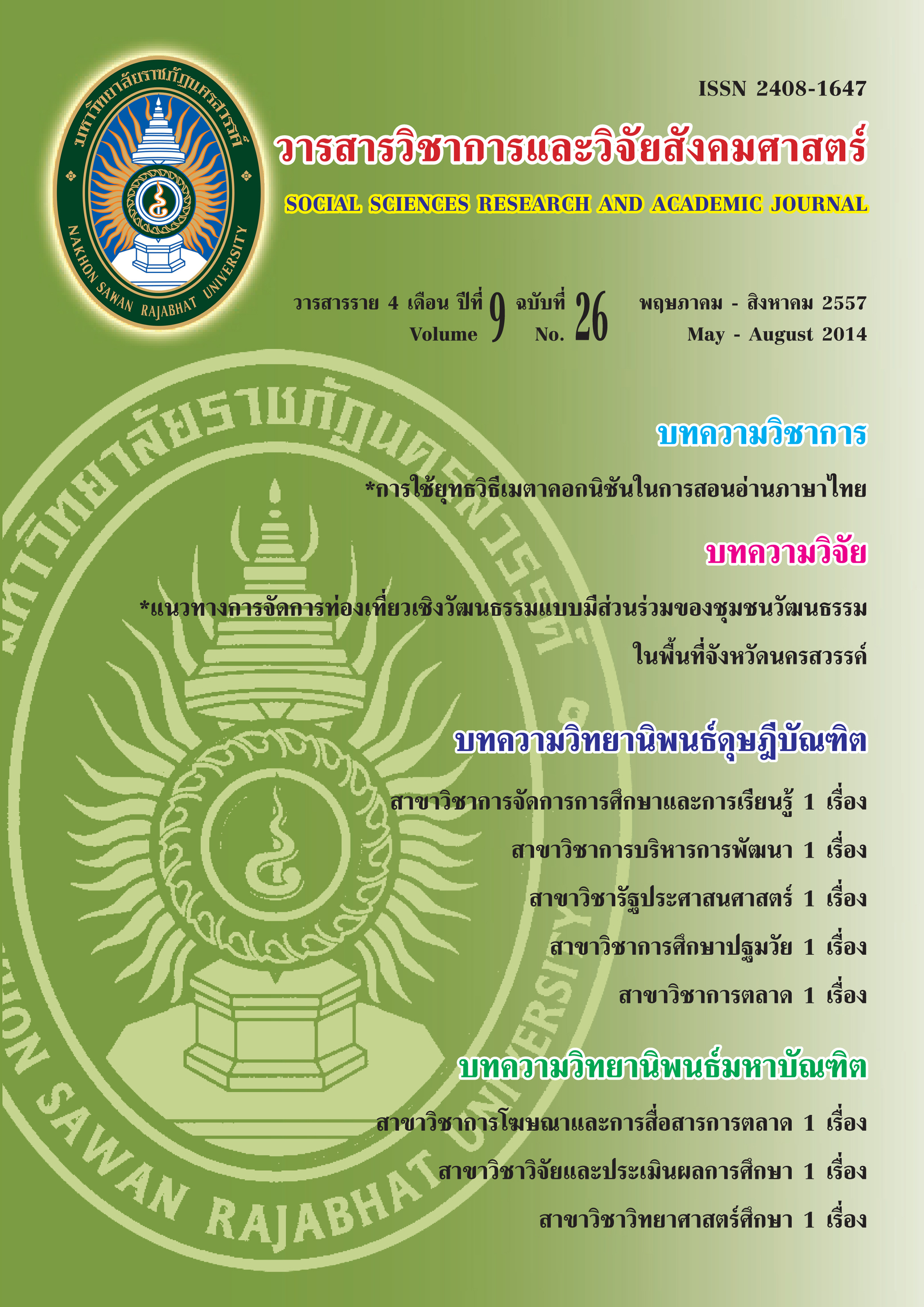กลยุทธ์การสร้างความแตกต่างเพื่อความได้เปรียบในการแข่งขันของสินค้าหนึ่งตำบล หนึ่งผลิตภัณฑ์ประเภทเซรามิกในเขตภาคเหนือตอนล่างของประเทศไทย (Differentiation Strategy for Competitive Advantage of Ceramics OTOP in the Lower Northern Region of Thailand)
Main Article Content
Abstract
บทคัดย่อ
การวิจัยครั้งนี้มีวัตถุประสงค์เพื่อศึกษา 1) ระดับความคิดเห็นและความพึงพอใจของผู้บริโภคสินค้าในการสร้างความแตกต่างกับความได้เปรียบในการแข่งขันของสินค้า OTOP ประเภทเซรามิก 2) ระดับอิทธิพลของปัจจัยที่เป็นสาเหตุของกลยุทธ์การสร้างความแตกต่างกับความได้เปรียบในการแข่งขัน ของสินค้า OTOP ประเภทเซรามิก และ 3) ระดับอิทธิพลของปัจจัยที่เป็นสาเหตุของการสร้างความแตกต่างด้านผลิตภัณฑ์ของสินค้า OTOP ประเภทเซรามิก การวิจัยเป็นแบบผสม (Mix Method) กลุ่มตัวอย่างเชิงคุณภาพคือผู้จำหน่าย
สินค้า OTOP ประเภทเซรามิกในเขตภาคเหนือตอนล่างของประเทศไทย จำนวน 6 ราย ส่วนเชิงปริมาณ
กลุ่มตัวอย่างเป็นผู้บริโภคสินค้า OTOP ประเภทเซรามิกในเขตภาคเหนือตอนล่างของประเทศไทย จำนวน
444 ราย สุ่มตัวอย่างแบบตามความสะดวก วิเคราะห์ข้อมูลโดยใช้แบบจำลองสมการโครงสร้าง
ผลการวิจัยพบว่า
1. ระดับความคิดเห็นและความพึงพอใจของผู้บริโภคสินค้าในการสร้างความแตกต่างด้านผลิตภัณฑ์ ด้านบุคคล ด้านภาพลักษณ์ และด้านช่องทางการจัดจำหน่าย ต่อความได้เปรียบในการแข่งขันของสินค้า OTOP ประเภทเซรามิกอยู่ในระดับมากและระดับปานกลาง
2. ความได้เปรียบในการแข่งขันได้รับอิทธิพลทางตรงจากความแตกต่างด้านบุคคล ด้านภาพลักษณ์ และด้านช่องทางการจัดจำหน่ายตามลำดับ ส่วนความแตกต่างด้านผลิตภัณฑ์ไม่มีอิทธิพลต่อความได้เปรียบในการแข่งขัน
3. การสร้างความแตกต่างด้านผลิตภัณฑ์ได้รับอิทธิพลทางตรงจากความแตกต่างด้านบุคคล และ
ความแตกต่างด้านภาพลักษณ์ ตามลำดับ
Abstract
The purposes of this research were to study 1) the levels of attitude and satisfaction of ceramics OTOP consumers on differentiation as well as competitive advantages of ceramics OTOP; 2) the levels of influences of factors that caused differentiation strategies as well as competitive advantages of ceramics OTOP; and 3) the levels of influences of factors that caused products differentiation of ceramics OTOP. The research applied mixed method. The sample group used for the qualitative research comprised 6 ceramics OTOP entrepreneurs in the lower northern region of Thailand. Also, those used for the quantitative research comprised 444 ceramics OTOP consumers in the lower northern region of Thailand, selected by way of convenience sampling. The data collected was analyzed by means of Structural Equation Modeling: SEM.
The findings showed that:
1. The levels of attitude and consumer satisfaction with ceramics OTOP in the differentiation
(in terms of products, persons, image, and distribution channels) of the competitive advantage of ceramics OTOP were at high and medium levels.
2. The competitive advantage were directly influenced by person differentiation, image differentiation and the distribution channel differentiation respectively, but product differentiation had no effect on the competitive advantage.
3. Product differentiation was directly influenced by person differentiation and image differentiation respectively.


